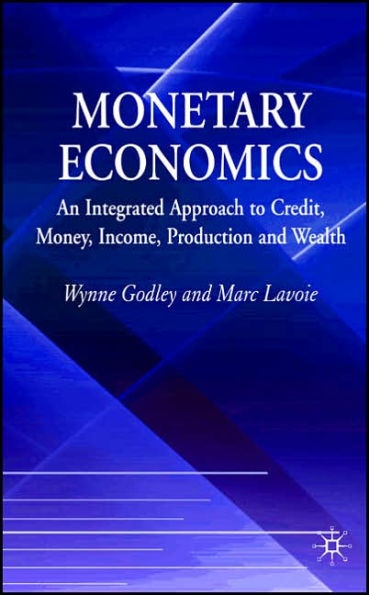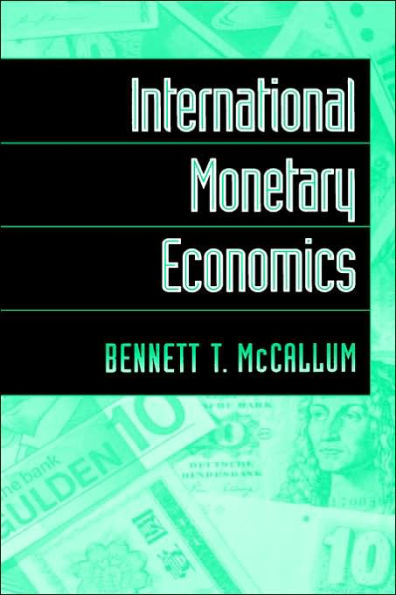Home
Monetary Economics: An Integrated Approach to Credit, Money, Income, Production and Wealth
Barnes and Noble
Monetary Economics: An Integrated Approach to Credit, Money, Income, Production and Wealth
Current price: $169.99


Barnes and Noble
Monetary Economics: An Integrated Approach to Credit, Money, Income, Production and Wealth
Current price: $169.99
Size: OS
Loading Inventory...
*Product information may vary - to confirm product availability, pricing, shipping and return information please contact Barnes and Noble
This book challenges the mainstream paradigm, which is based on the inter-temporal optimization of welfare by individual agents. It introduces a new methodology for studying how it is institutions (firms, banks, governments, foreigners and households) which create flows of income, expenditure and production together with stocks of assets (including money) and liabilities, thereby determining how whole economies evolve through time. It is a central contention that any realistic representation of a monetary economy must be grounded in a fully articulated system of national income and flow-of-funds accounts which is so complete that the nth variable is logically implied by the other n-1. As the financial balances of each sector have exact counterparts in changes in stock variables, historical time is introduced into the basic system of concepts, with asset and liability stocks providing the link between each period and each succeeding period.
It is taken as axiomatic that decisions are based on expectations about the future reached under conditions of uncertainty, so for every sector there must exist at least one flexible option or 'buffer' over which that sector has no direct control and which adjusts passively when expectations are falsified. For firms the buffer will normally take the form of inventories, for banks and governments it will be stocks of government securities, for households it will be stocks of credit money. Accordingly, outside financial markets there is neither need nor place for equilibrium conditions to bring supply into equivalence with demand. It will almost always be quantities rather than prices which give the signals which keep the economy ontrack.
Starting with extremely simple stock-flow consistent (SFC) models, the text describes a succession of increasingly complex models, using a conventional narrative style backed up by equations which bring precision to individual propositions. However, underlying each narrative there exists a simulation model constructed with such rigour that, in harmony with its basis in comprehensive accounting, there is always one equation which is implied logically by all the others. Solutions of these models are used to illustrate, with figures, ways in which whole economies evolve when shocked in various ways. Readers will be able to download all the models and explore their properties for themselves. A major conclusion is that economies require management via fiscal and monetary policy if full employment without inflation is to be achieved.
About the Author:
Wynne Godley was formerly Director of the Department of Applied Economics at the University of Cambridge, UK
Marc Lavoie is Professor in the Department of Economics at the University of Ottawa, Canada
It is taken as axiomatic that decisions are based on expectations about the future reached under conditions of uncertainty, so for every sector there must exist at least one flexible option or 'buffer' over which that sector has no direct control and which adjusts passively when expectations are falsified. For firms the buffer will normally take the form of inventories, for banks and governments it will be stocks of government securities, for households it will be stocks of credit money. Accordingly, outside financial markets there is neither need nor place for equilibrium conditions to bring supply into equivalence with demand. It will almost always be quantities rather than prices which give the signals which keep the economy ontrack.
Starting with extremely simple stock-flow consistent (SFC) models, the text describes a succession of increasingly complex models, using a conventional narrative style backed up by equations which bring precision to individual propositions. However, underlying each narrative there exists a simulation model constructed with such rigour that, in harmony with its basis in comprehensive accounting, there is always one equation which is implied logically by all the others. Solutions of these models are used to illustrate, with figures, ways in which whole economies evolve when shocked in various ways. Readers will be able to download all the models and explore their properties for themselves. A major conclusion is that economies require management via fiscal and monetary policy if full employment without inflation is to be achieved.
About the Author:
Wynne Godley was formerly Director of the Department of Applied Economics at the University of Cambridge, UK
Marc Lavoie is Professor in the Department of Economics at the University of Ottawa, Canada

















